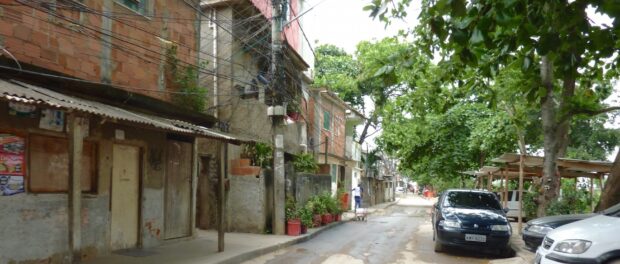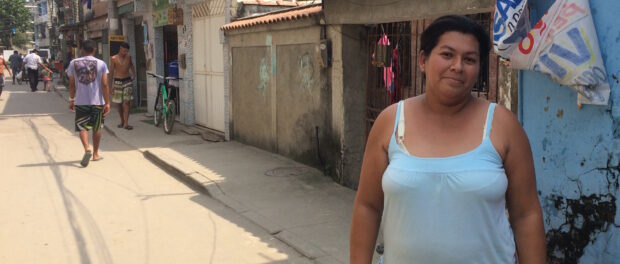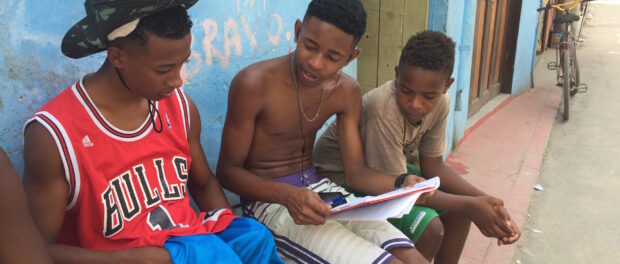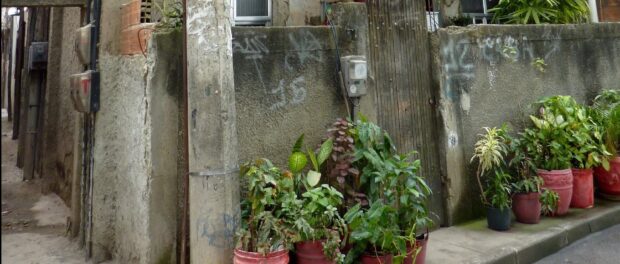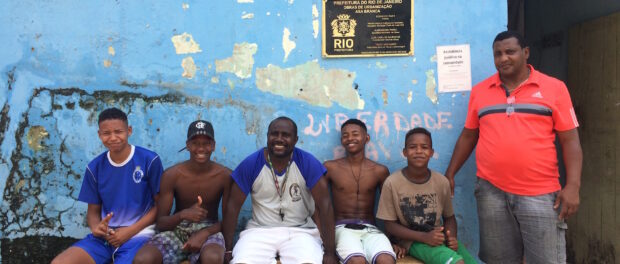
The United Nations’ “Urban October” closes October 31st with the second annual World Cities Day. The day is designed to celebrate global urbanization, cooperation, and sustainable urban development. The UN’s newly adopted Sustainable Development Goals (SDGs) agenda for 2030 incorporates the goal to make all cities and “human settlements inclusive, safe, resilient, and sustainable.” Appropriately, this year World Cities Day is dedicated to the theme “Designed to live together,” encouraging the development of socially cohesive cities, inclusive housing, job opportunities, and safe and healthy living environments. UN Secretary-General Ban Ki-moon articulated: “In a world where over half the population lives in urban areas, the human future is largely an urban future. Our struggle for sustainable development will be won or lost in cities.” Here in Rio de Janeiro, we pay tribute to World Cities Day by focusing on the particularly inclusive and well-planned Asa Branca favela in the West Zone of Rio.
Asa Branca, which translates to ‘White Wing’ in English, began as did all of Rio’s favelas: an informal community founded around work opportunities. The 35-year-old West Zone community is located where an orchard once stood, distant from and servicing the central areas of Rio. Workers came to work at Cimentex, a building supplies company, and, with no affordable housing options near their employer, settled the community. Today at approximately 8,000 residents, Asa Branca still feels intimate. The community has never been occupied by drug traffickers and local organizing has been a long-term constant contributing to a sense of safety. Residents know their neighbors, welcome new members, and participate in community-organized classes and events. Asa Branca exemplifies how favelas are “designed to live together.”
“There is no other community like ours,” says Flavia Maria de Oliveira, a resident who has seen Asa Branca grow from its beginnings. “For all the changes I have seen in my 30 years, it remains one of the friendliest and most welcoming places to live.” Flavia looks down the street, where potted plants line the sidewalk and a mother pushes a stroller, holding the hand of a toddler. “It’s a very peaceful community because we’ve never had a presence of drug trafficking. I’ve raised a family here and can sleep with the doors unlocked at night.”
Flavia’s house sits on the same street as the Residents’ Association, a sky-blue building revealing its purpose not only with an official government plaque but also with groups of people gathered out front. “For me, the best part of the community is right here,” says Ney Wallace, a founder of the community. He sits on a bench in front of the Association, with about six boys gathered around chatting and laughing. “We can sit out front, have parties and meetings inside, and have classes for residents every day. There is always something going on here at the Association.” The boys around him nod in support. “This building was made brick by brick by us residents, working together. I think I spend more time here at the Association than I do in my home!” Wallace laughs.
He goes on to discuss the beginnings of the community, of the orchard that turned into a lively neighborhood. “It was difficult because the community was once so small, but family after family began to move in. We evolved and expanded our space to accommodate new residents. We didn’t have pavement or lights, or running water. We had to collect our water from outside of the community.” Wallace shares his nostalgia for the small community that Asa Branca once was, but also praises the evolution that made the community what it is today. “If you asked me if I could change Asa Branca or move to a new part, I would say no, I want to stay in the center of the community—there is no better part!”
“This community is special because we’ve done everything ourselves in order to keep it functioning,” says Carlos Alberto Costa, who is known in the community simply as “Bezerra.” A warm and enthusiastic man of about fifty, he holds the important position of President of the Residents’ Association. “Asa Branca was founded because there wasn’t a government program at the time for housing. The government largely left us to our own struggles, to build and provide for ourselves. We needed a sewer system, so we took a vote within the community and built it ourselves. Every member of the community—women, men, children—was involved in this process.”
Bezerra’s leadership in Asa Branca has helped the favela become the inclusive and engaged community it is today. “The president of the Association has an obligation to bring better opportunities and results to the community,” he says. Bezerra recognizes the power of education and brings language and educational classes to the Residents’ Association every day. “We have English and French classes, along with German and mathematics. On Thursday nights we have a theater class, and on Saturdays we have courses in photography, community journalism, and radio. Every class is taught by volunteers or partners and is open to anyone for free. The Association is always full because residents can get free wifi here as well,” he says.
As president, Bezerra has deliberately sought ways to extend the positive experiences of a community designed to live together to incoming residents, including over 180 Haitian immigrants. “For Haitians it’s hard to be here [in Brazil],” says Dieuseul Duclosil, a Haitian resident of Asa Branca for just over a year. “We don’t have a lot of power, so when someone like Bezerra opens the community to us and provides Portuguese courses to help our integration, we feel welcome.” Duclosil, who speaks French, Creole, Spanish, Portuguese, and English, approached Bezerra and told him that he would like to teach English and French classes. “When I told him this, Bezerra was extremely enthusiastic and within just two months, I was formally teaching classes every week at the Residents’ Association.” Duclosil represents an influx of immigrants who left Haiti after the devastating earthquake in 2010, looking to Brazil for work opportunities and a better life. “I first arrived in Rio Grande do Sul in the south of Brazil and stayed there for 3 years, but moved to Rio because the weather is similar to Haiti’s,” he says. “I also came because the Olympic Games offer better work opportunities for both construction projects and language.”
Asa Branca is located just 800 meters from the construction site of the main Olympic Park, which has provided both work opportunities to residents of favelas as well as waves of evictions and removals. Residents of a neighboring favela, Vila Autódromo, continue their struggle to hold on to legally owned land, while Asa Branca has been largely spared due to its more distant and out-of-sight location from the park. “We’ll have a few removals here due to the construction of the TransCarioca Bus Rapid Transit line on one side and the TransOlímpica BRT line on the other, but nothing existentially threatening,” says Bezerra. “For the most part, it’s only 66 homes in the main area and 45 houses behind [that are going to be removed], all to make room for the TransOlímpica BRT station,” he says. “As president, I discuss with residents what they want in this situation of removal. If they want to take the compensation money and move away, then great. If they want to stay, then I help negotiate with the government in order to find the best options.”
Sounds of children playing soccer down the street fill the air, along with the scraping of plastic chairs as small shops and restaurants prepare for lunch. “These small shops and bars stay open until two or three in the morning,” Flavia says. “families can gather and drink beers here, it’s very tranquil.” Asa Branca continues to upgrade and expand with its growing population, but does so in a welcoming and equitable way. It maintains the safe and inclusive living environment that it had as a small community while fostering diversity and social cohesion between different cultures and ethnicities. UN Habitat states that “cities designed to live together create opportunities, enable connection and interaction, and facilitate sustainable use of shared resources”—Asa Branca does just this. It is time that communities like Asa Branca are celebrated for their urban development, for their leadership, and for their modeling social inclusion in a way we can all follow suit.

